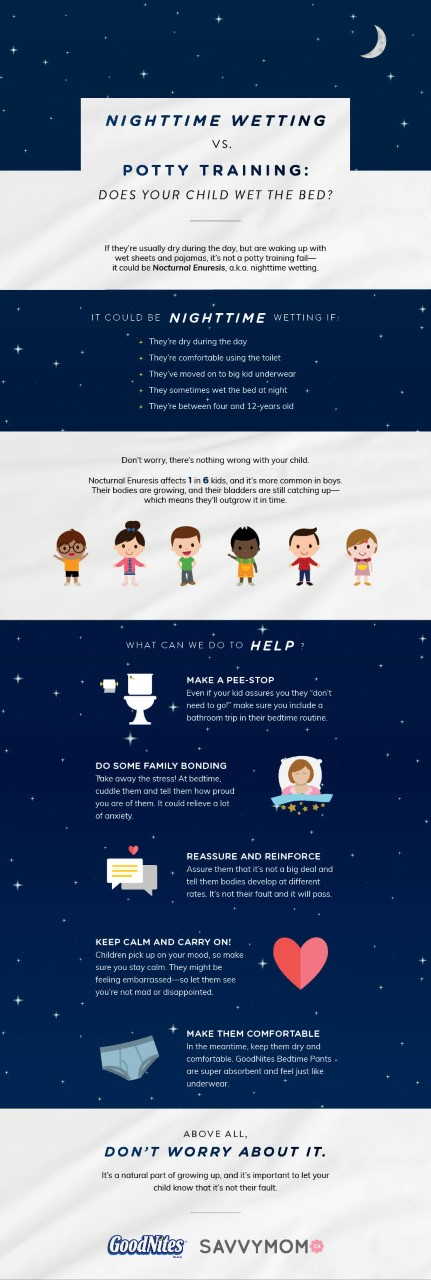How to Tell the Difference Between Potty Training and Nighttime Wetting (And 4 Ways to Manage the Transition)

After having three kids, I’ve come to realize that potty training always goes one of two ways. Either it’s ridiculously easy or it’s ridiculously hard. I’ve tried everything under the sun, from playing games and filling out charts to reading books and playing with “potty” toys. Each potty training journey required patience and hard work but one by one, we made it to the finish line.
Once they were fully trained, I discovered a new stage in my child’s development called nighttime wetting. I tried to use some of my successful potty training techniques but ended up stressed out, upset, and feeling like a failure when none of it worked. I learned that while I was able to train my kids out of diapers, nighttime dryness is something I cannot control and something my kids cannot control! It’s something that must be outgrown, simply because their bladders haven’t developed as quickly as their bodies.
If you’re a fellow parent who is experiencing nighttime wetting, just know that you aren’t alone. I’ve been through it—and I know I’m definitely not alone in this.
Here are four tips for understanding and managing nighttime wetting to help everyone have happier, more relaxed nights.
- Understand the difference.
Potty training and nighttime wetting are very different things. This is something I didn’t know when I started out on the potty training journey. Even if you’ve got your kids out of diapers or training pants during the day, staying dry at night is a completely different ballgame. It’s something that just can’t be trained—kids have to outgrow it and it may take longer than you’d expect. - Let them know it’s no big deal.
I spoke with Child and Family Therapist Michele Kambolis about nighttime wetting and she reiterated, “for some, nighttime wetting is an inevitable part of growing up and is more common than you think.” This was huge for me. When I learned that one out of every six kids experiences bedwetting, I felt so much more relaxed knowing it wasn’t just me. I also discovered that it’s partly genetic too (sorry kids)! Nighttime wetting is completely normal and it’s important for children to know that, as well. There’s no reason for anyone to feel bad about it and it’s pretty much a non-issue around my house. - Make sure they’re comfortable.
Before I understood that it wasn’t a big deal, I spoke with a lot of other moms about what I could do about nighttime wetting. They suggested I try absorbent bedtime pants as the best way for my kids to feel comfortable and get a good night’s sleep. I’m a big believer in GoodNites® Bedtime Pants in particular because they fit really well, kept my kids dry, and they’ve got fun designs that kids love. GoodNites® recently launched a new XS Bedtime Pants, which are perfect for younger kids who recently finished potty training (between 28 and 45 lbs). They offer a smaller, less bulky fit, and provide extra protection at night to prevent leaks (because who wants to be washing and changing sheets daily?) - Wait… wait… and wait.
This is the last, and hardest, step. You just have to wait. Some kids are able to stay dry at night relatively quickly, and some take a little while longer. Others take a lot longer. In fact, more than 15% of four to 12-year olds are affected by this. So try your best to wait it out. You’ll probably find that just like most things in parenting, with a little bit of time and patience, and a lot of love and understanding, it’ll happen.
For more tips, click here to print the full-size infographic.
This post was sponsored by GoodNites, but I truly and honestly use and love GoodNites. I’m a mom of three little ones so I’ve been through nighttime wetting trenches and these have been a staple in our home.

















